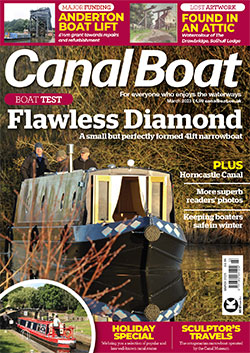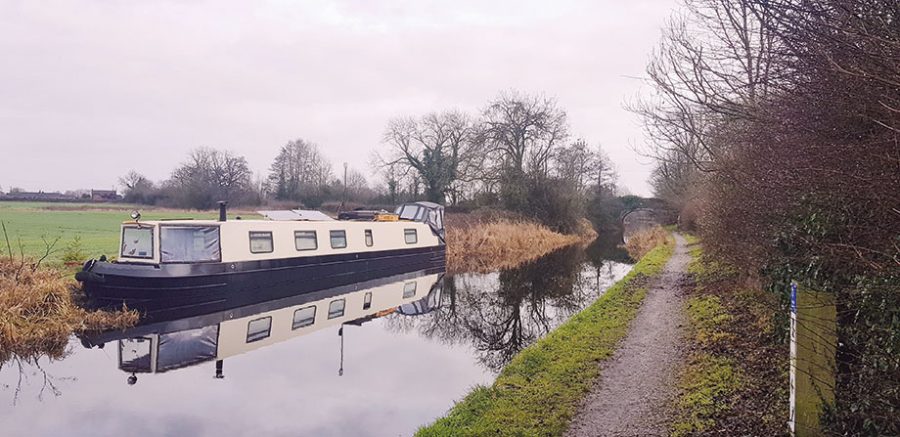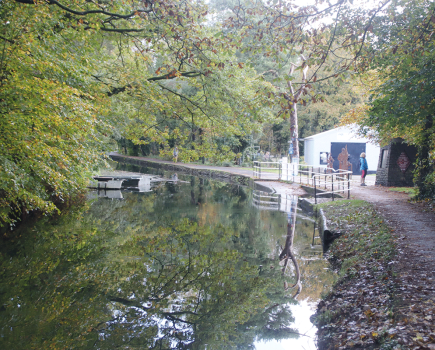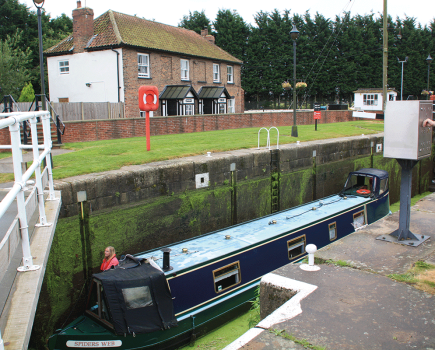There have been more than 200 miles of canal restored in the last two decades, with more restorations ongoing as Mortimer Bones explains.
Apparently, more than 200 miles of canal have been restored in the last 23 years! To find out more about current projects, I found myself on the Canal and River Trust website. I was delighted to find an interactive map of the lost waterways in England and Wales. It shows the potential restorations, work taking place, and new waterway links proposed across the network. Better still, it has clickable links giving easy access to the local websites. These give more information from those directly involved, as well as ways to get involved oneself.
It was great to see the projects online. I have spent many a happy hour exploring redundant waterways in various forms. When I am out and about, it can be quite hard to work out where the waterway would have been as there are road networks or buildings covering all evidence of these once thriving waterways. At times though, the structures are in place, but the canal has become a road. Other times the canal has some water, and other times the ditch is clear, but the water is absent. Whatever I stumble upon it is always exciting, and I find myself standing in the thin line between the present and the past imagining what it might have been like it its heyday. Restoration and potential new links bring the opportunity to think about the future too.
These projects aren’t just about the work now, but the ongoing work that is needed to keep them open in the future. I really admire the people who have been able to think through such huge ideas. They not only address how to overcome the reason these stretches may have been lost, or never even existed, but know how to bring them back to life and to last. It takes decades.
Since our outing last summer with the Huelwen Trust at Welshpool, who offer canal trips for the less abled, I have been enchanted with the Montgomery Canal, and its restoration. As soon as I started exploring it, I could see why. It is beautiful; not only does it have numerous listed structures, it is a Site of Special Scientific Interest. While accessible from the Llangollen Canal, the last winding hole is at Gronwen Wharf. Progress to Welshpool continues.

Mill Bridge and Arm
I started my journey to explore the Mony at Maesbury Marsh. This was the final destination of one of the last freights delivering grain from Liverpool. I hadn’t been there before, and I was really surprised at how much I enjoyed the area. Canal Central was closed when I arrived (it is open Friday – Sunday) so I couldn’t have a cup of tea and find out more, but I am certainly looking forward to taking up one of their camping pitches in spring. They not only have canoes to hire, which would be a great way to explore from the water, but there was a miniature railway track (7 1/4in) running around the property.
It wasn’t long before I was passing my first enchanting spot; Crofts Mill canal bridge. It is a lift bridge carrying the road alongside the Mill Arm. I have always enjoyed the hint of industry as I travel the inland waterways, so this arm was really interesting to me. I followed the arm a little way, but then made my way back to the mainline and continued on. I wasn’t sure where the restoration had got to, but I was looking forward to seeing the ‘silver propeller’ location; Gronwyn Wharf. There are more than 60 ‘silver propeller’ locations, and the challenge set by the IWA is to visit 20 different locations by water transport to receive a plaque. The good news is that the ‘Silver Propellor’ aren’t just over England and Wales – there are some in Scotland too!
I was amused to discover a laminated ‘No Entry’ sign in the grass of Gronwyn Wharf, and also above Bridge 82. This seemingly unofficial notice is how the last winding hole is noted, and boaters alerted to the end of the navigation. Tom Rolt’s ‘Cressy’ was one of the last boats that was used to link Gronwyn Wharf with the coal mines. Another thin place in history where the past and present meet.

One side of Crickheath Bridge…
Further along, at Crickheath Bridge, there is a dam. One side of the bridge is in water, with mooring rings. The other side there is a clear ditch, where restoration has yet to take place. Further along and I stood alongside ‘Schoolhouse Bridge’. This is the next huge piece of work to take place in the restoration. The amount of funding and volunteer work is incredible and shows how passionate people are to restore this waterway. I can see why. I wonder whether I will be able to bring my boat down the whole length before I retire?

…and the other side
The Montgomery Canal started with a group of landowners and businesses coming together to transport the fuel to the kilns, and the limestone and wool back out again. It received Royal Assent towards the end of the 1700s. It was closed by an Act of Parliament in 1944 and the restoration started in 1969 with a ‘Big Dig’. Today, the restoration continues and we can all get involved – if not in the Monty, there will be something nearby to get stuck in to.
 As featured in the March 2023 issue of Canal Boat. Buy the issue here
As featured in the March 2023 issue of Canal Boat. Buy the issue here








